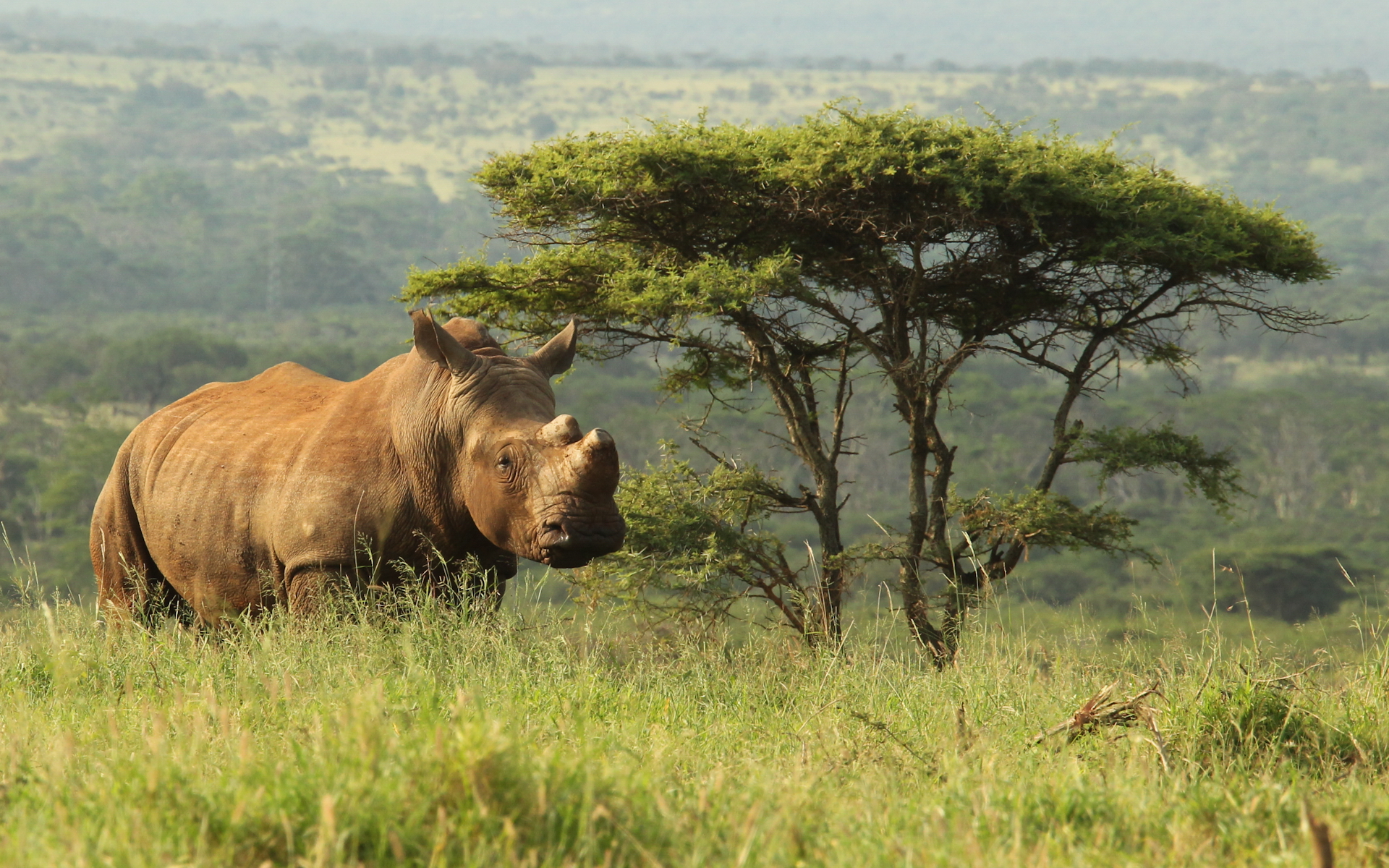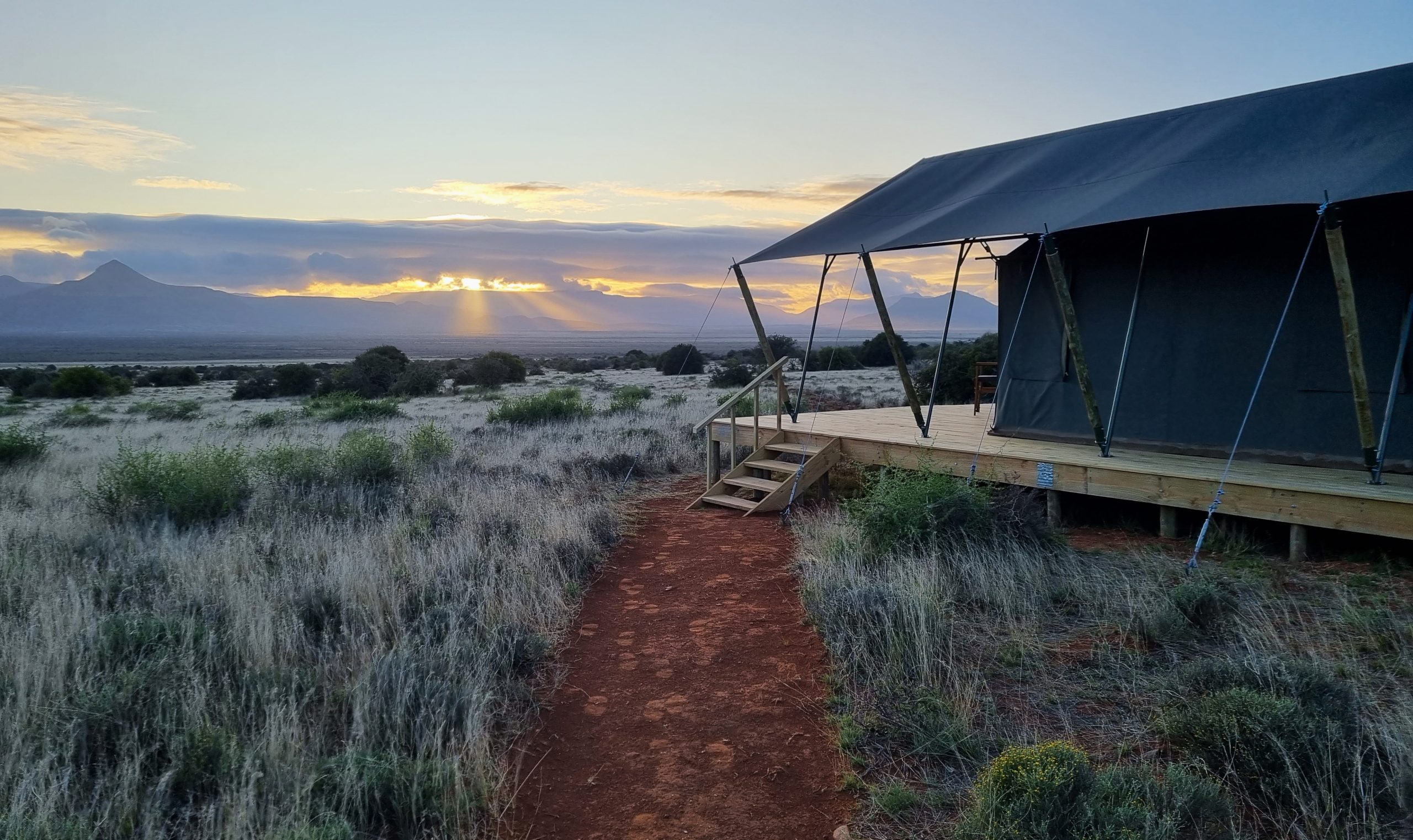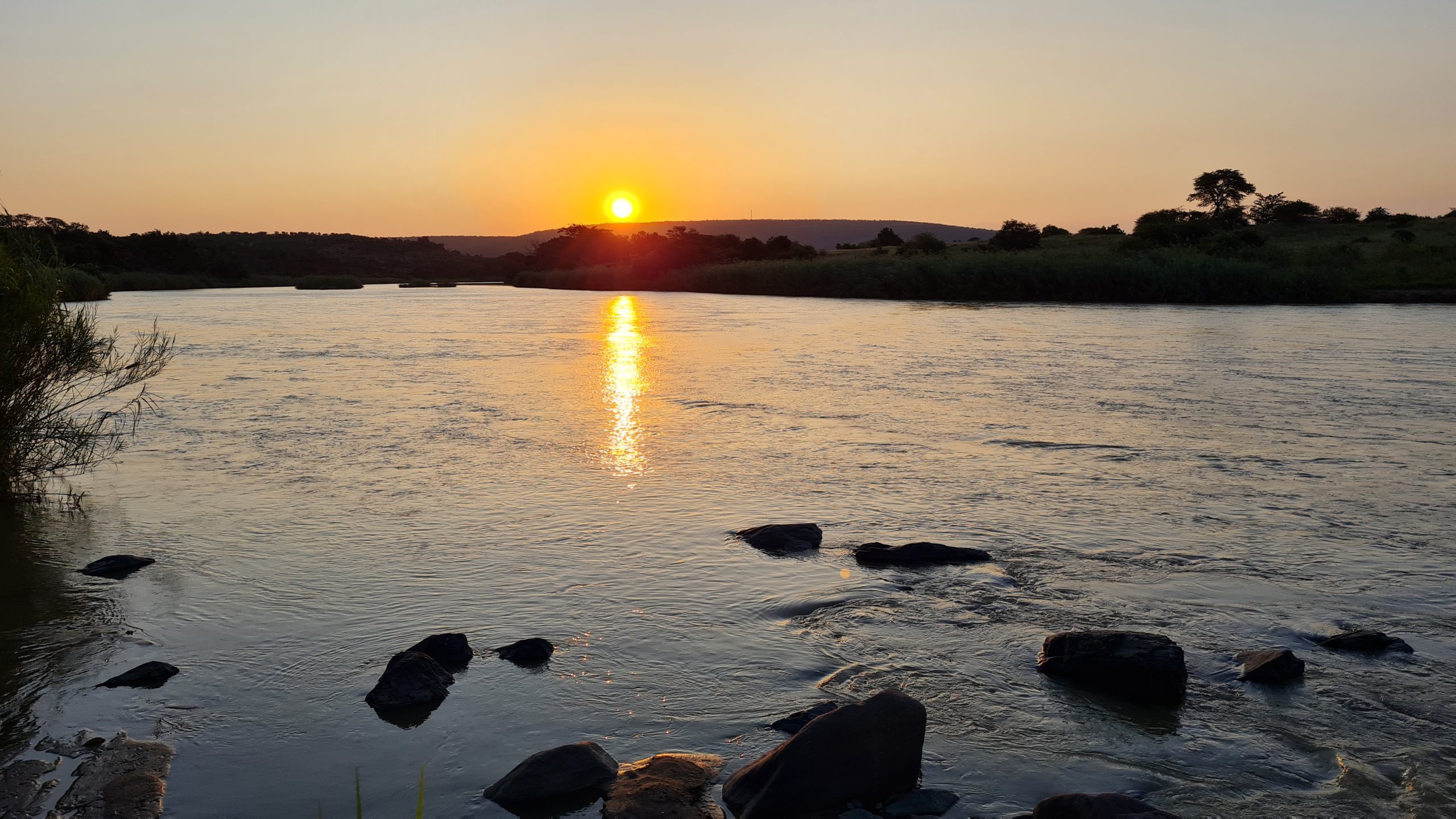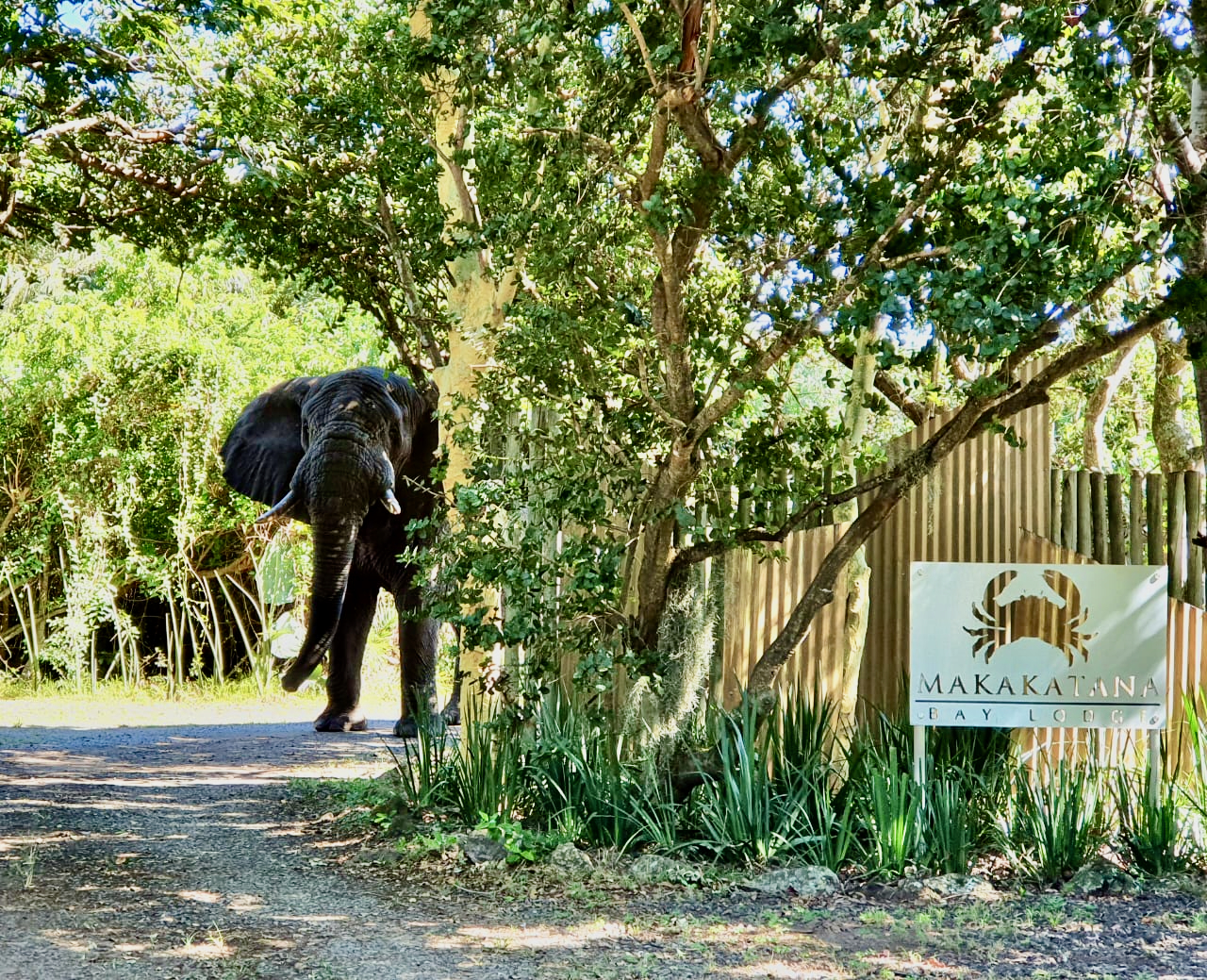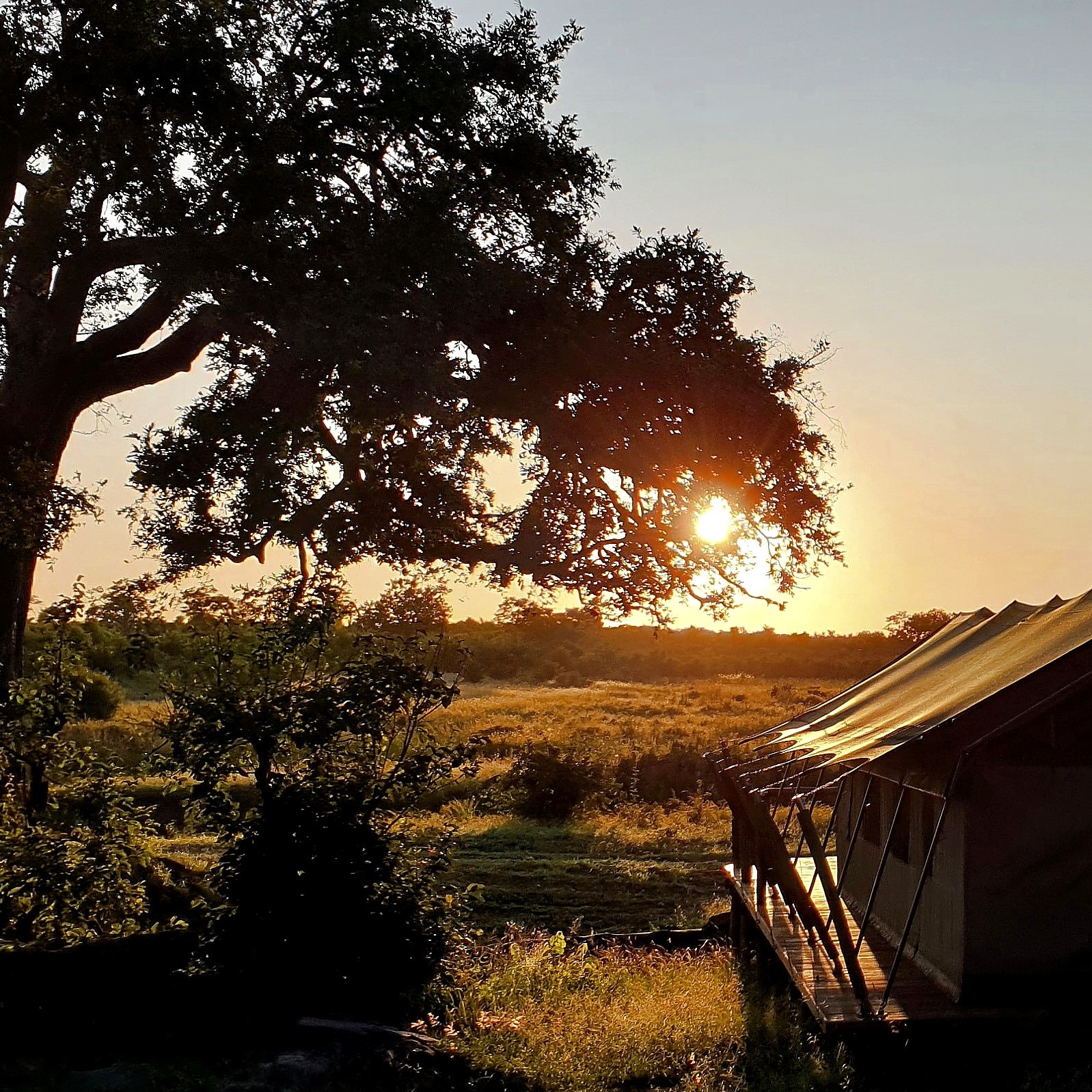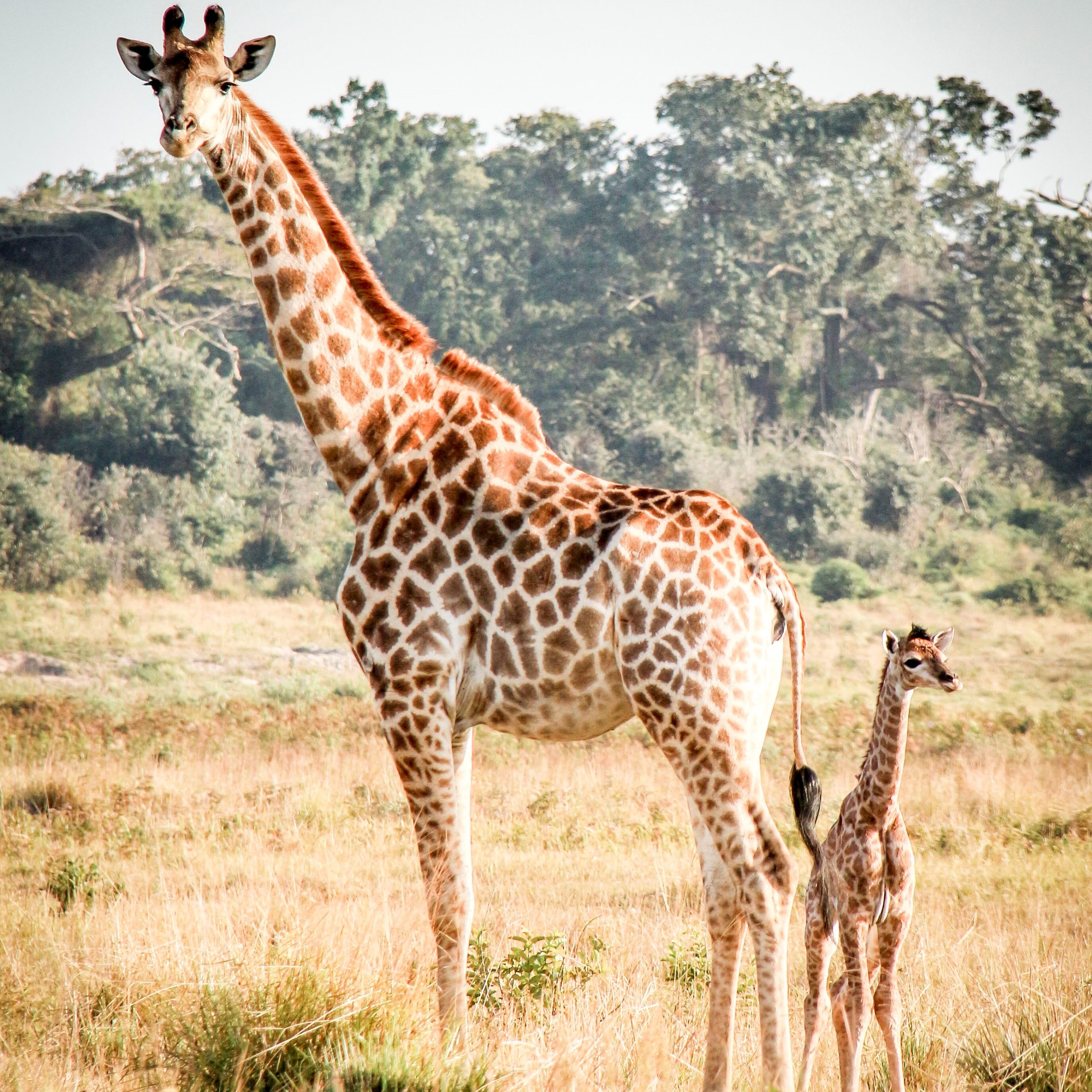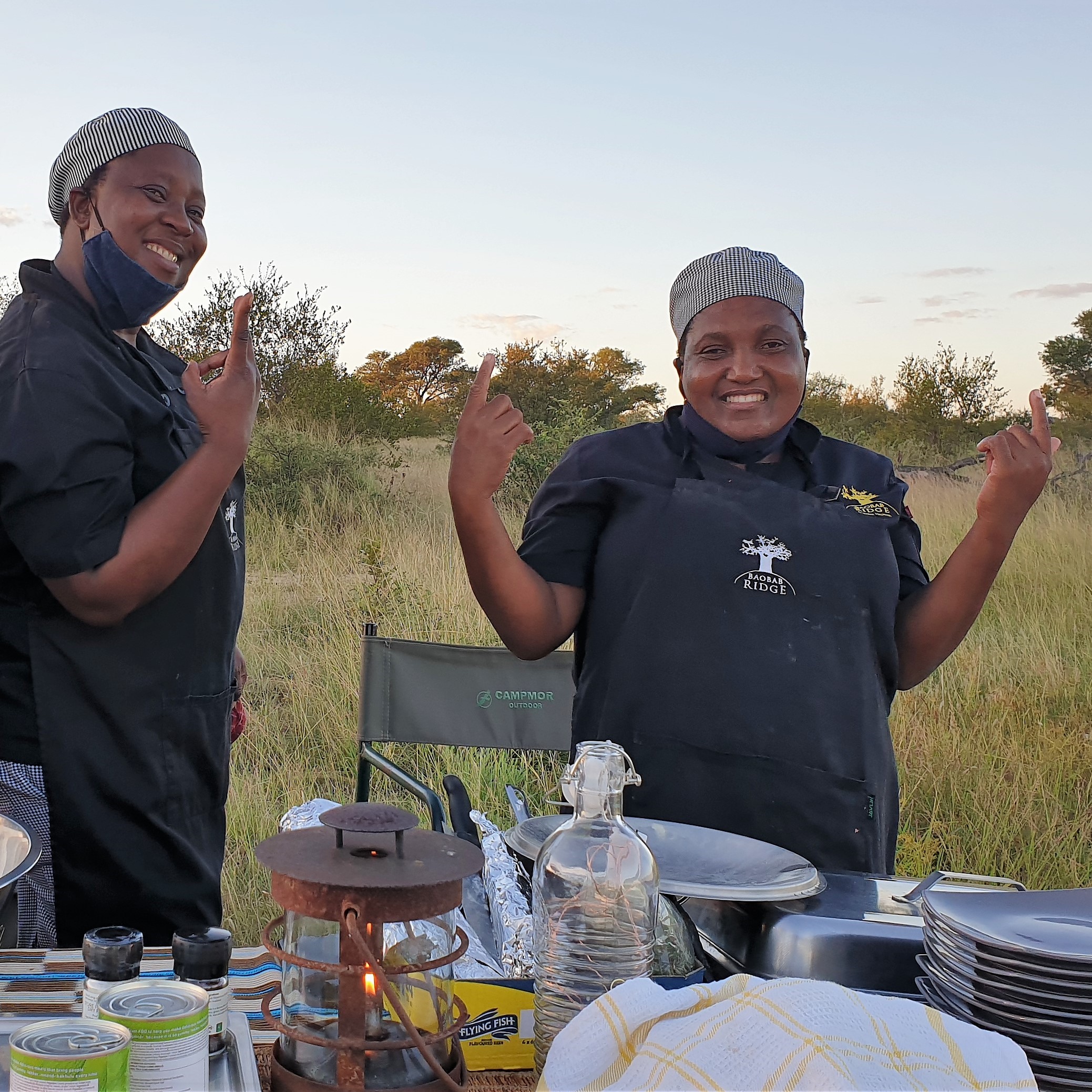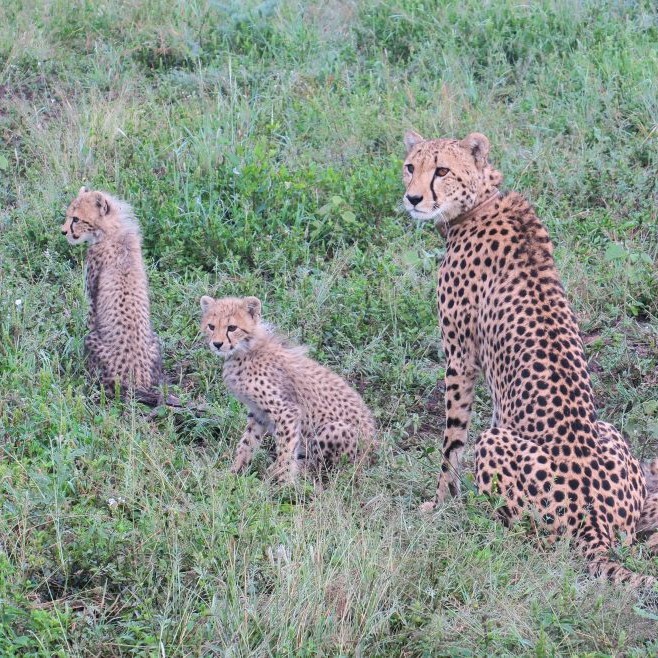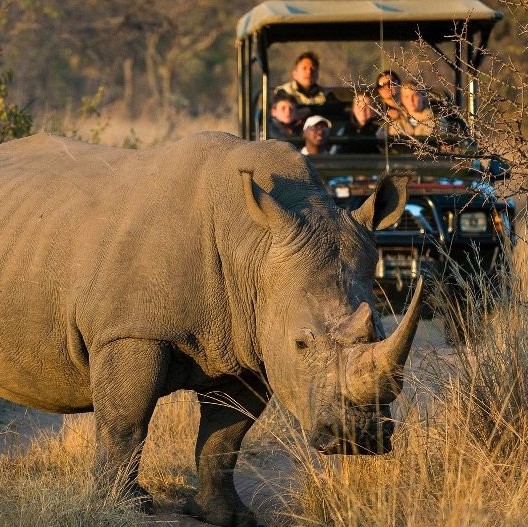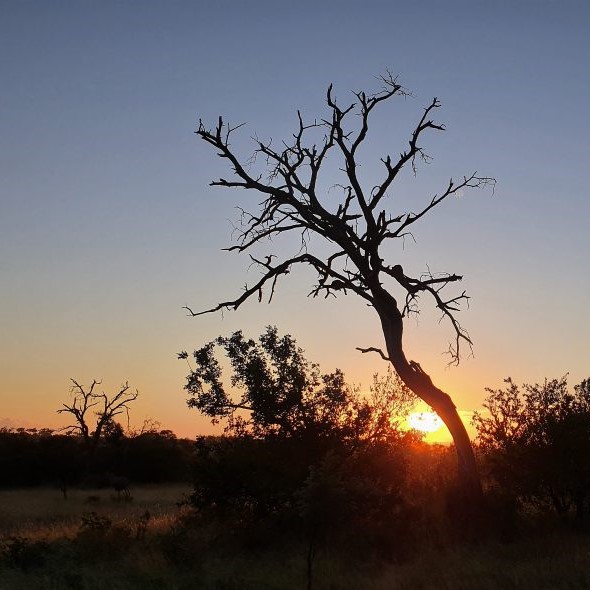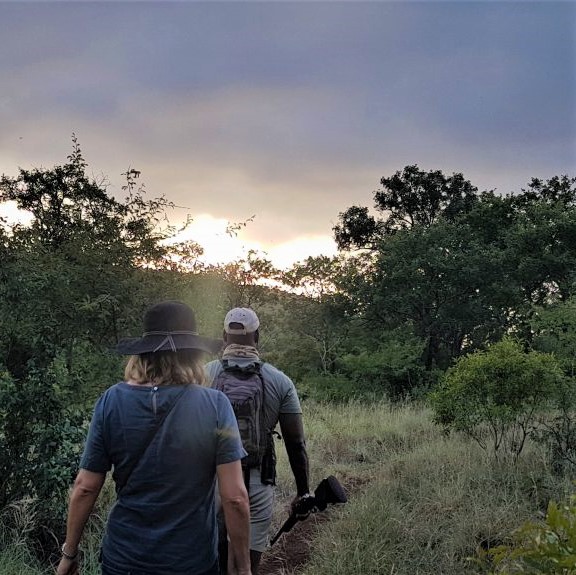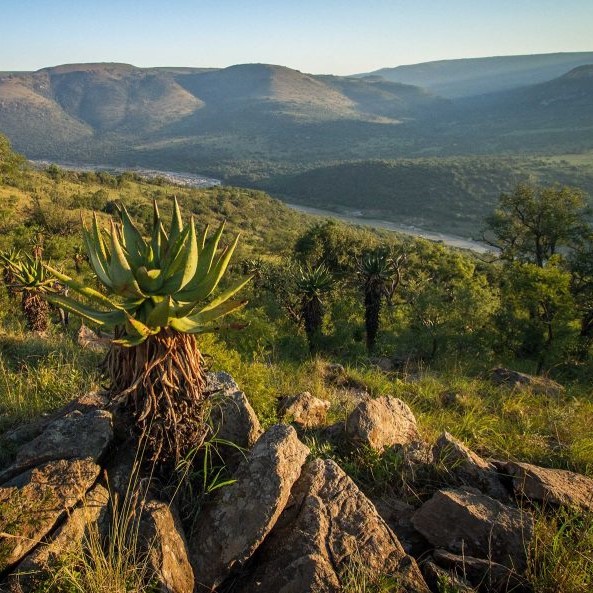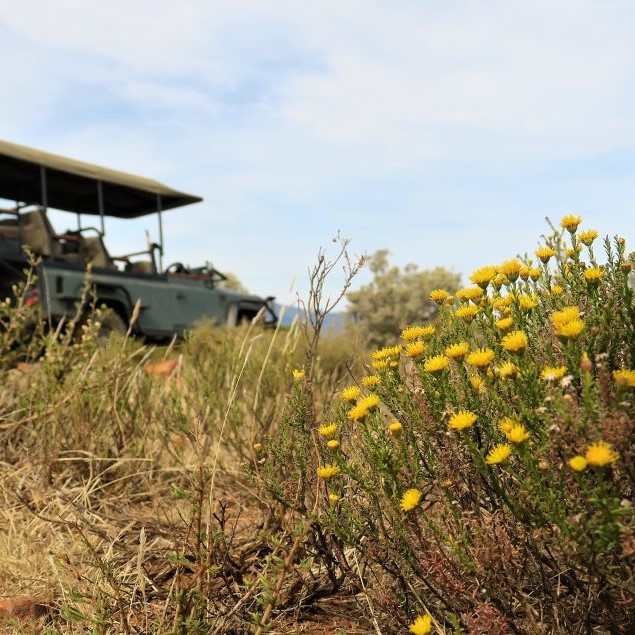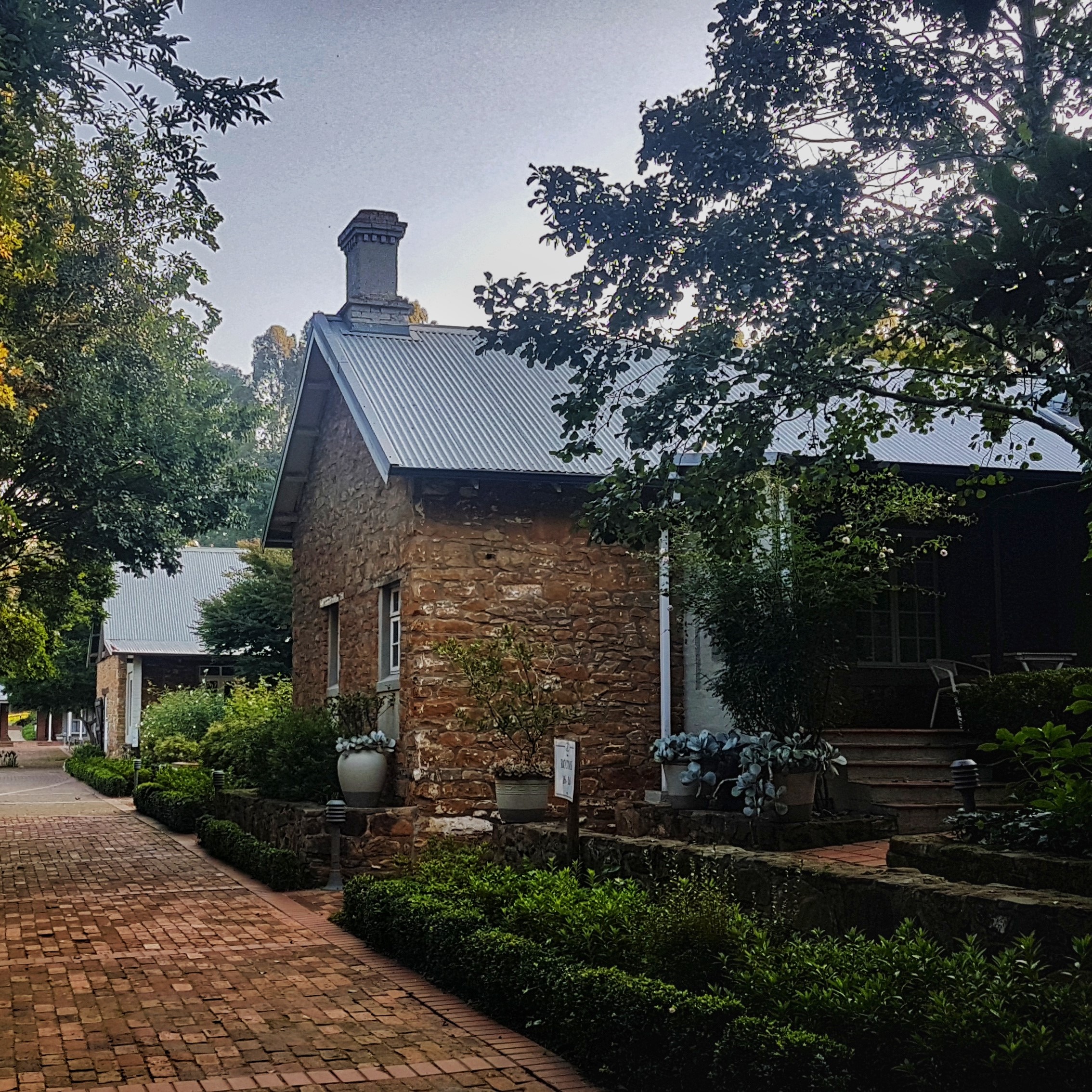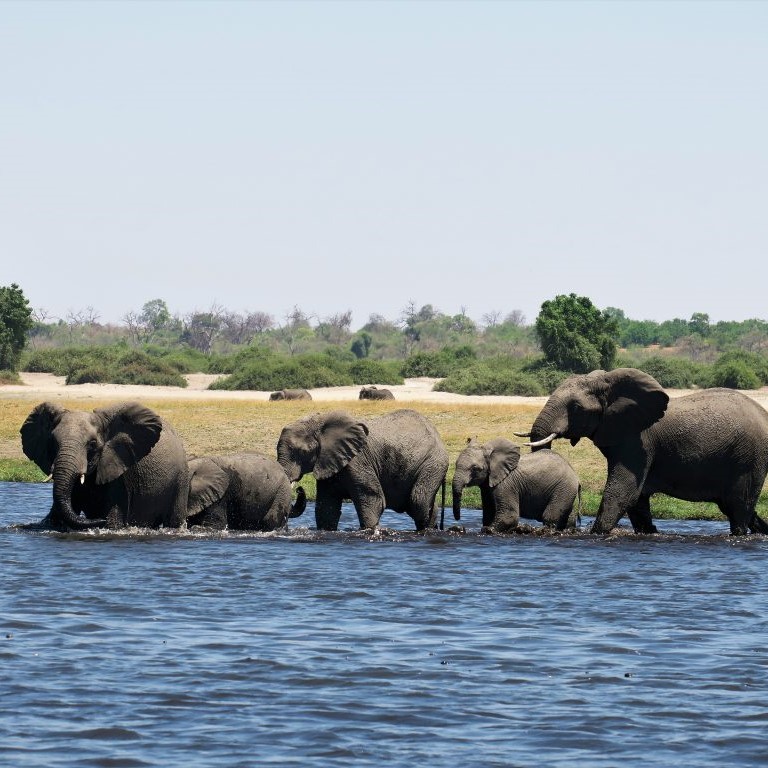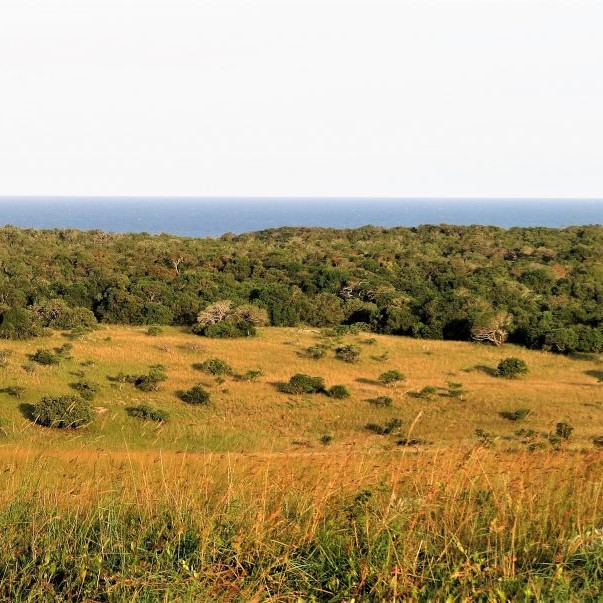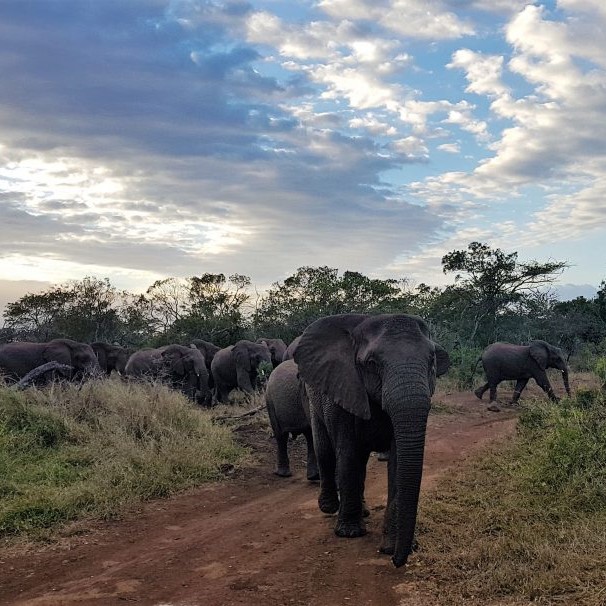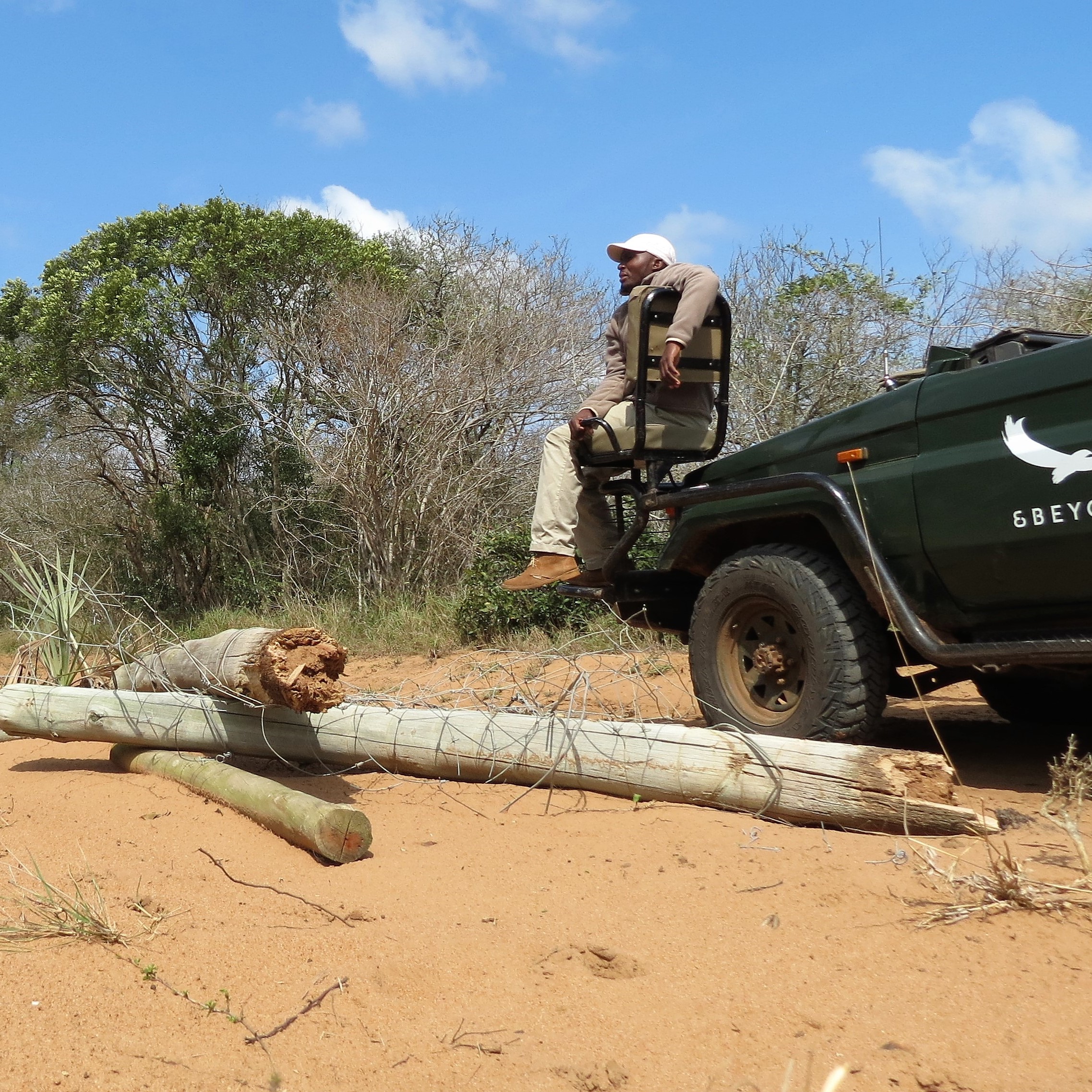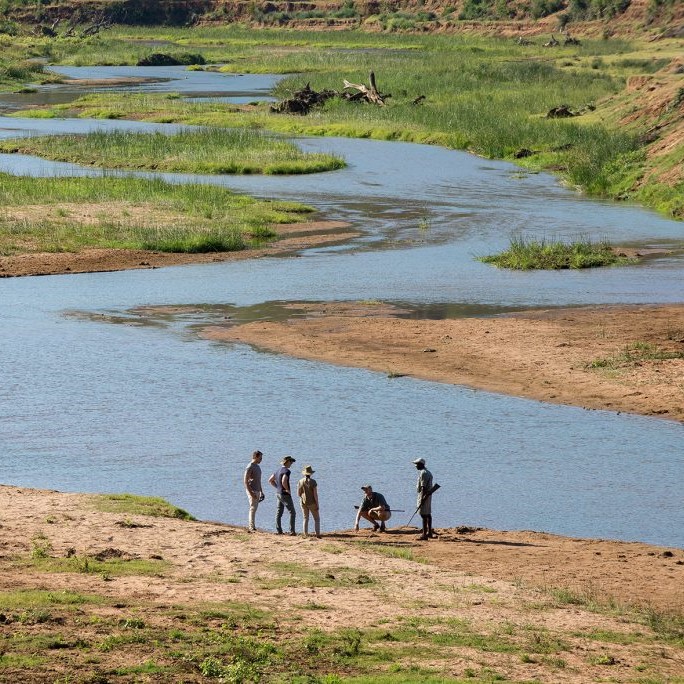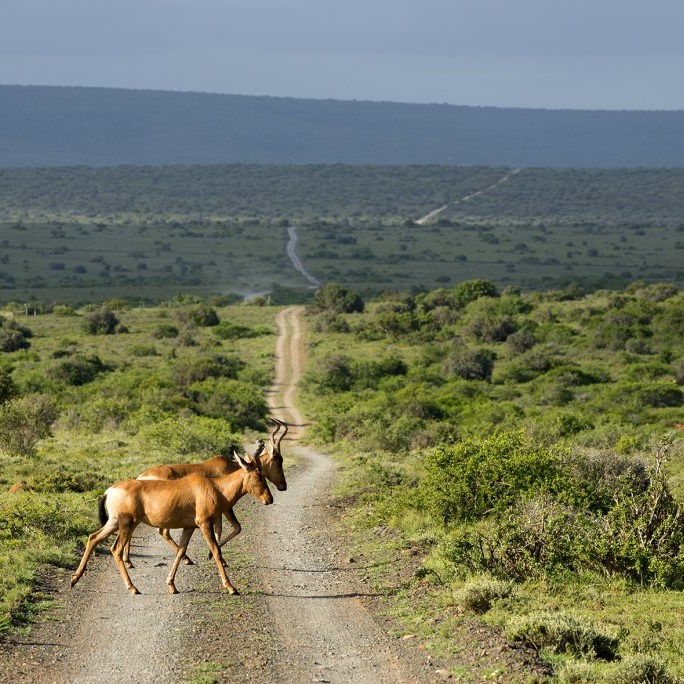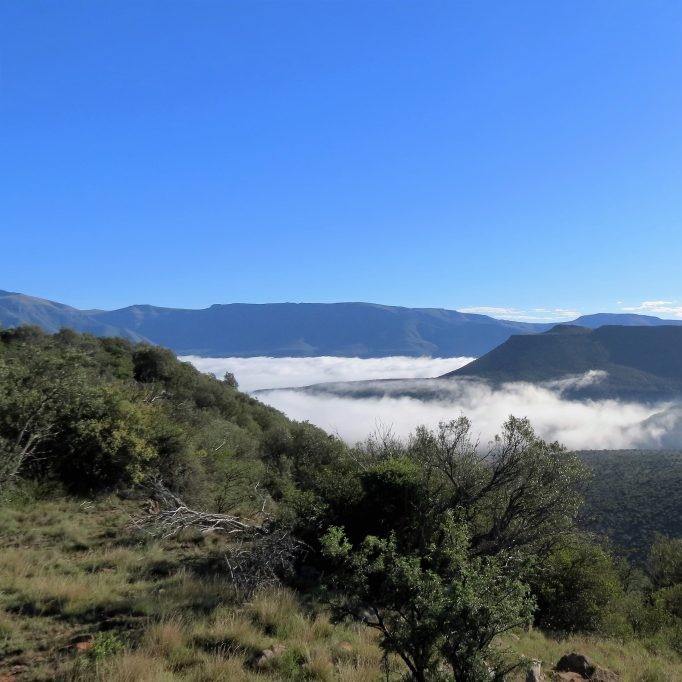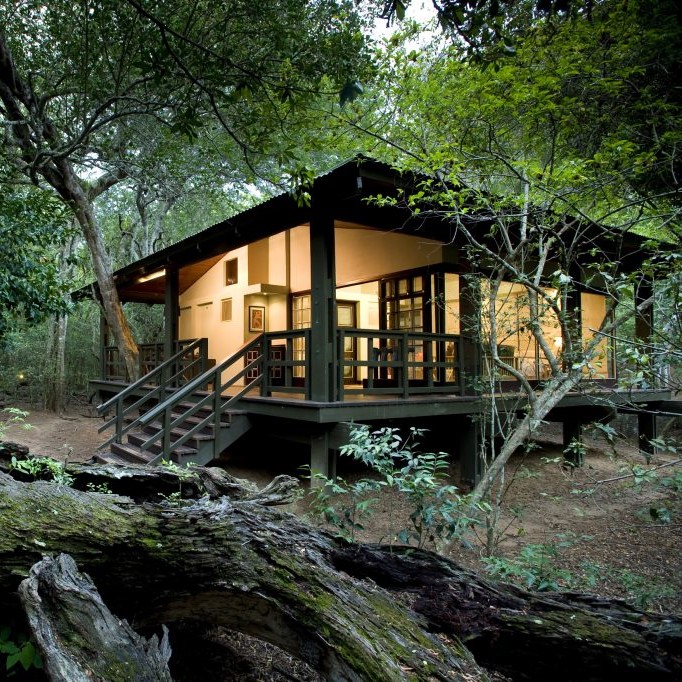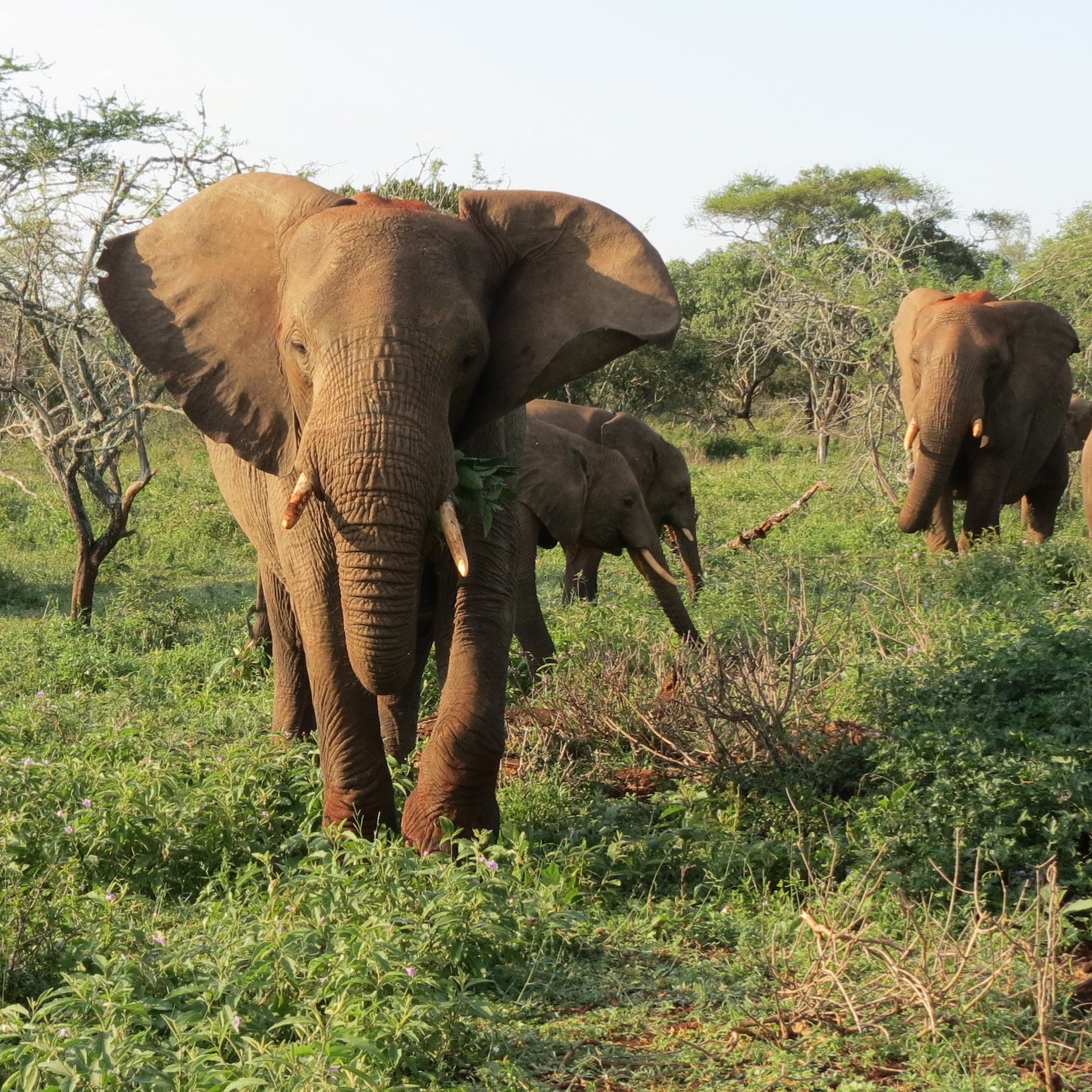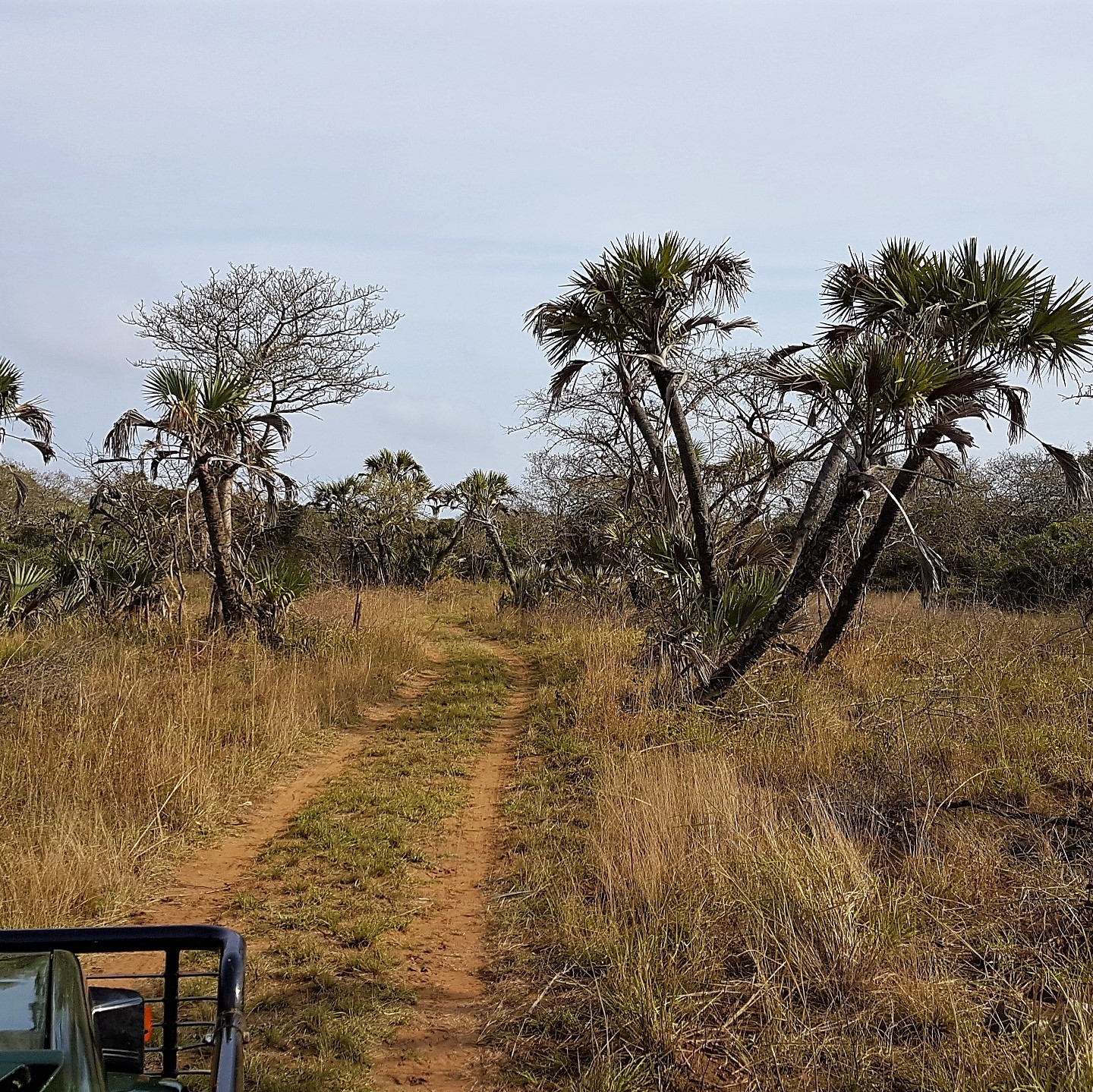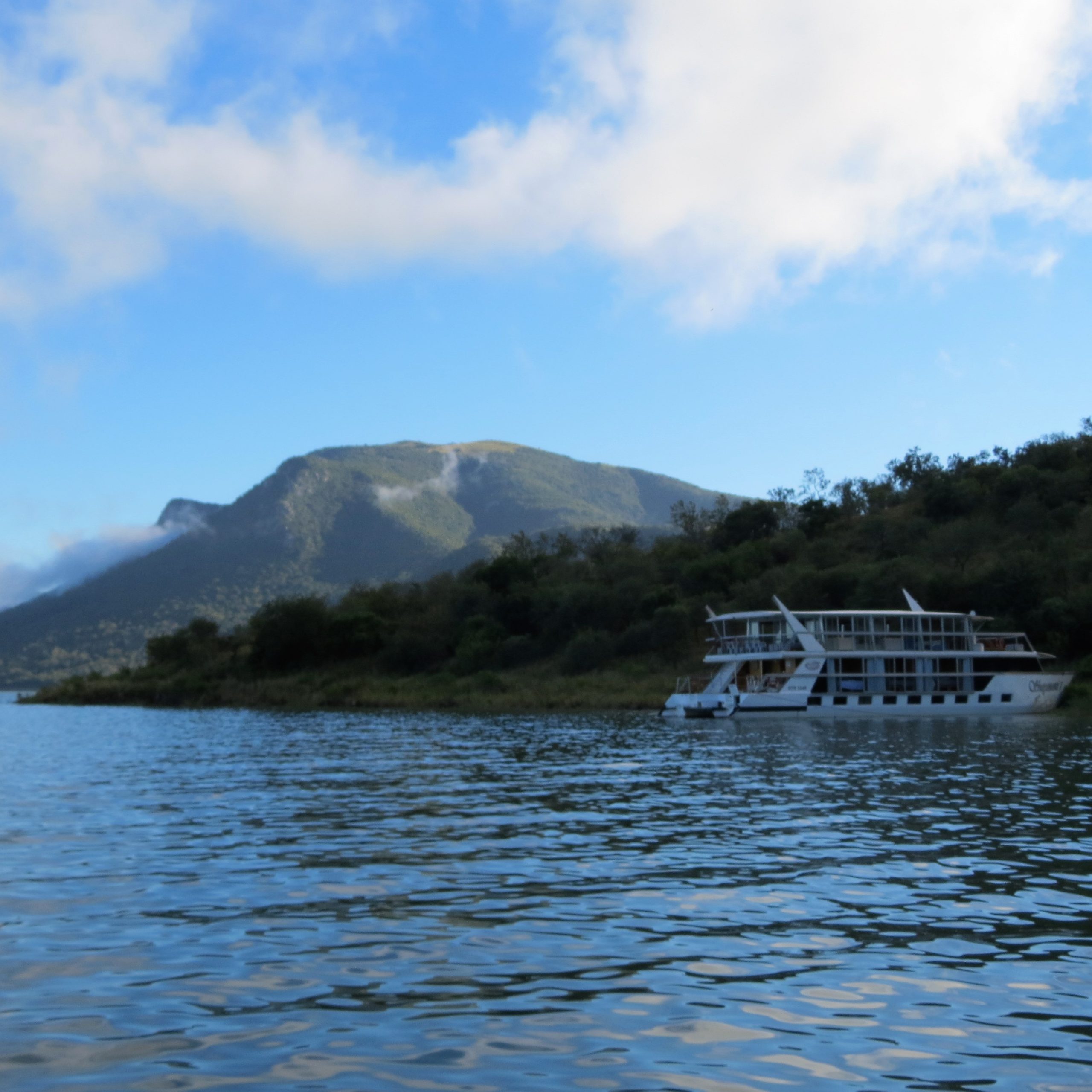I was knee deep in water in the middle of the African bush at Amakhosi Safari Lodge – in Big 5 territory… the muddy water trickling into my gumboots, my toes squishing with every step. We’d seen lions and elephants that morning and a couple of dagga boys (old male buffalo) on our drive here. They’d possibly been wallowing in the exact spot I was standing! But we weren’t here for lions, buffalo or any other big game. Our attention was on some little critters, one might say the more important critters, seeing as they are an indicator species – we were about to go frogging!
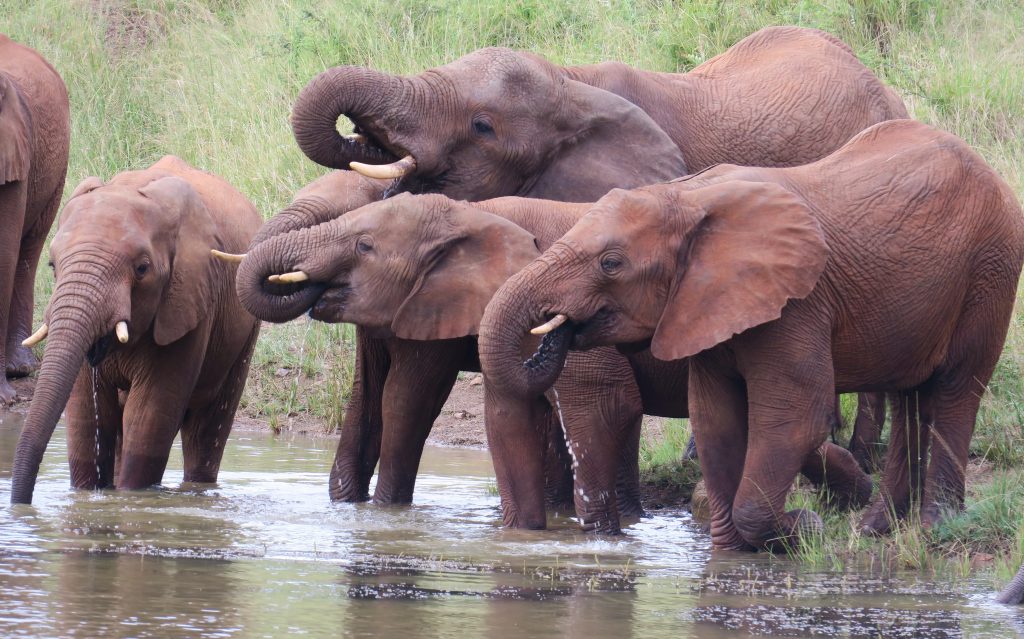
We were wading through the reeds along the margins of a shallow marsh looking for frogs with Alwyn Wentzel, General Manager at Amakhosi Safari Lodge in northern Zululand, KwaZulu-Natal. It was the school holidays’, so Alwyn and Sonja’s daughters had joined us. They had the right idea, as after a couple of gumboot submerging steps into the mud, they ditched their boots in favour of going ‘au naturelle’ and experiencing a mini mud bath in the process – it looked like fun and I was quite envious wishing that I had worn shorts so that I could ditch my boots and feel the mud squelch through my toes.
It was dusk when we arrived at the waterhole. Covered in bug spray from top-to-toe and armed with a headlamp as well as much anticipation we walked towards the seasonal waterhole. With winter approaching it would soon dry out, but for now it was a haven for amphibians, a wallowing hole for buffalo and rhino, and a source of refreshment for all the other creatures and critters.
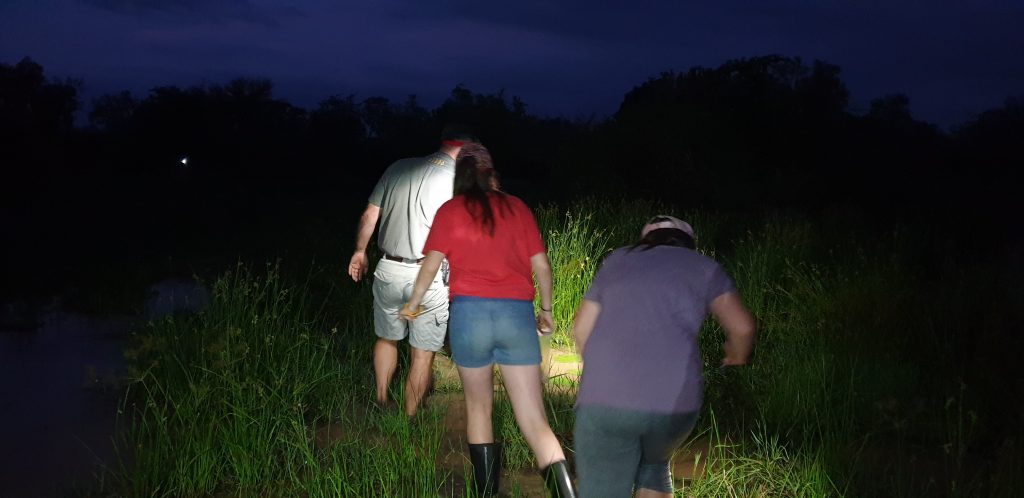 We were a week or two too late for the peak frogging season as all we manage to see are a few painted reed frogs (male, female and one still sporting its breeding colours), a snoring puddle frog, a sharp-nosed grass frog and a heard a mottled shovel nosed frog who was determined not to be found – he burrows down into the mud and his call is heard through a crack in the ground. We see the empty nest of a foam nest frog, but no evidence of the frogs themselves.
We were a week or two too late for the peak frogging season as all we manage to see are a few painted reed frogs (male, female and one still sporting its breeding colours), a snoring puddle frog, a sharp-nosed grass frog and a heard a mottled shovel nosed frog who was determined not to be found – he burrows down into the mud and his call is heard through a crack in the ground. We see the empty nest of a foam nest frog, but no evidence of the frogs themselves.
Glancing down I spot a leaf floating on the water, but on closer inspection it was a water brooding bug. Alwyn tells us that it’s a vicious predator that feeds on frogs and small fish and has ‘one heck of a bite’. I choose to stay clear of it!
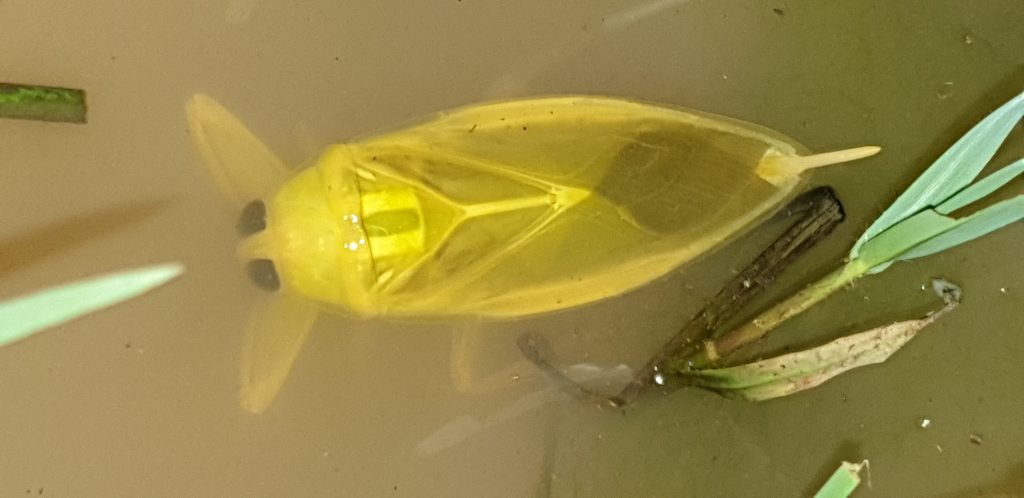 We head to another dam to see if we would have more luck. A sneaky young crocodile spots us and follows our movements along the water’s edge. We hear a bubbling kassina, but he remains elusive. Alwyn apologises for the lack of frogs and explains that the frogging season is very weather dependant, starting with an explosion of life at the first summer rains and continuing for a few months until all the mating and frolicking is dealt with – somewhere between mid-November towards the end of March, depending on when the rains start.
We head to another dam to see if we would have more luck. A sneaky young crocodile spots us and follows our movements along the water’s edge. We hear a bubbling kassina, but he remains elusive. Alwyn apologises for the lack of frogs and explains that the frogging season is very weather dependant, starting with an explosion of life at the first summer rains and continuing for a few months until all the mating and frolicking is dealt with – somewhere between mid-November towards the end of March, depending on when the rains start.
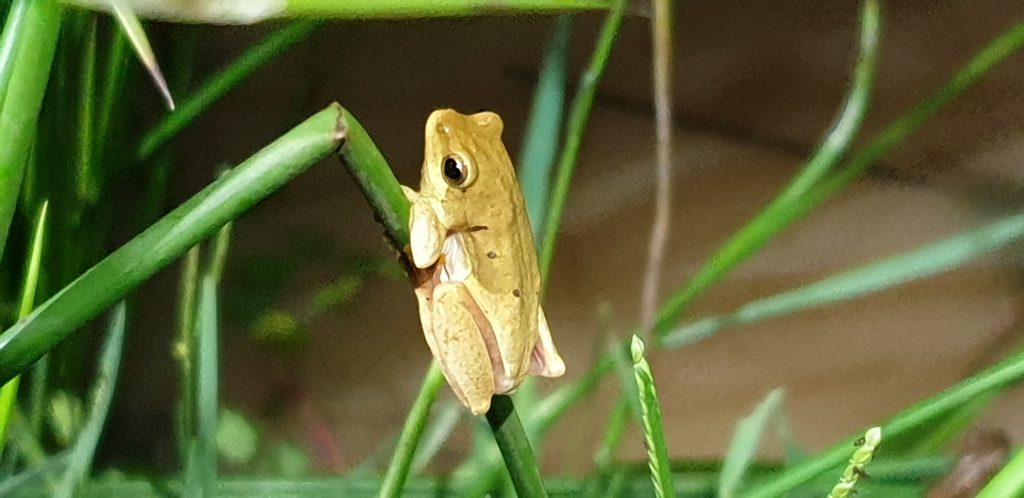
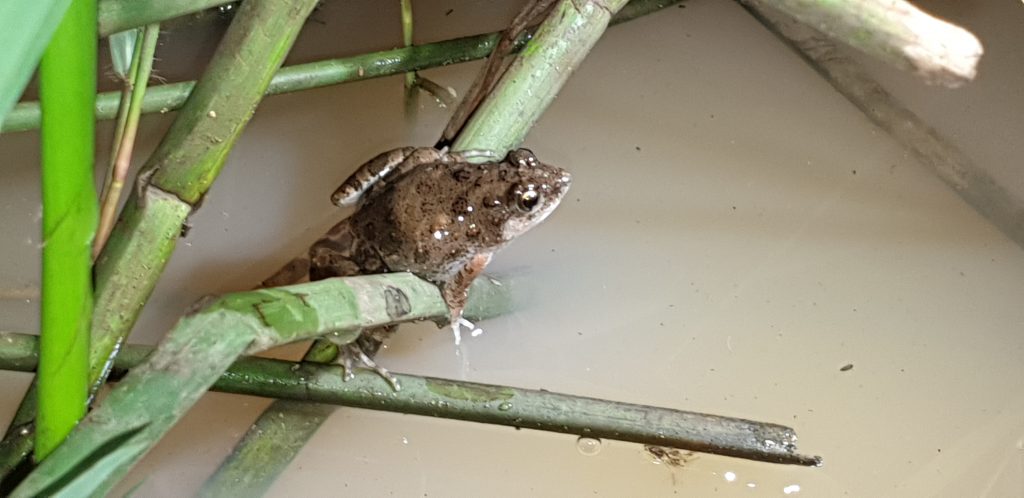 ‘And then where do they go?’ I ask. He explains that some burrow into the mud, others find refuge under rocks or in the hollow of a tree trunk, biding their time until the next seasons rains arrive. Something we’ll have to do for the full frogging experience – I don’t mind though as it’s just another reason to visit Amakhosi again!!
‘And then where do they go?’ I ask. He explains that some burrow into the mud, others find refuge under rocks or in the hollow of a tree trunk, biding their time until the next seasons rains arrive. Something we’ll have to do for the full frogging experience – I don’t mind though as it’s just another reason to visit Amakhosi again!!
Over coffee the next morning I chat to Alwyn to get the inside story on frogging…
I ask him what a frogging experience offers and he tells us that ‘it’s a different experience to bouncing around the bush on a vehicle looking for the Big 5’. He emphasises that it ‘introduces guests to the micro-world which is the foundation of the eco-system, the essential building blocks to it and that the big, beautiful animals only exist because of this. And when you go into wetland and river environments you start delving into the importance of these systems.’
‘When we frog with guests, we share the importance of wetlands and river systems – which is knowledge they can take home with them. Wetlands are critically important places; the world is running out of water – even high rainfall countries – and it’s critical that we start conserving these systems and frogs are a wonderful indicator species of the health of these systems and in turn a critical link in the cycle.’
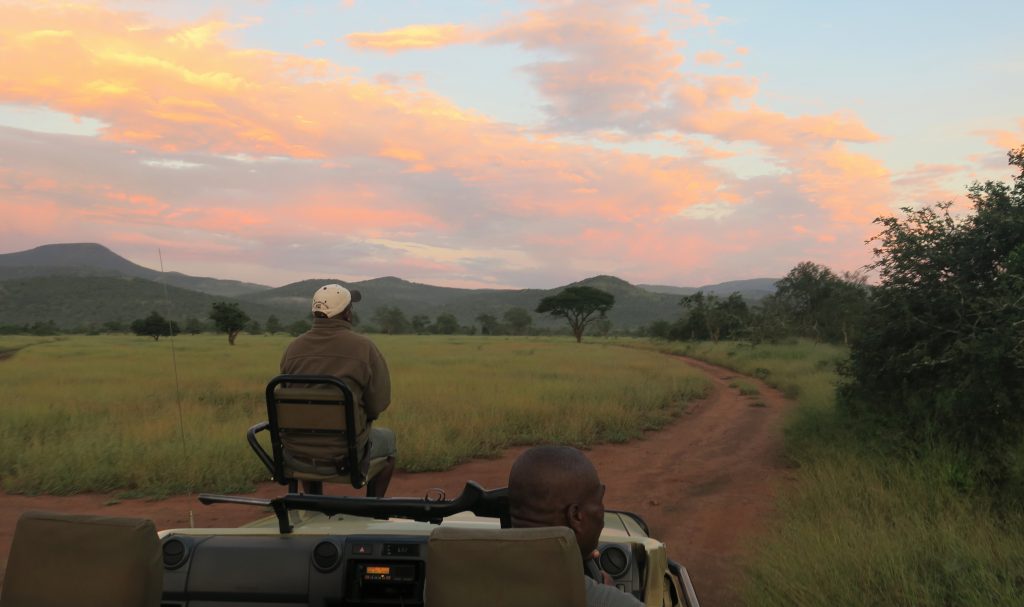 I ask Alwyn how he started frogging… ‘Years ago, when I was still a junior guide, most of the topics of the natural world were covered in our training – like the stars, trees, birds and game. But there wasn’t much in the way of information on frogs, only Vincent Carruthers book on frogs and frogging.’
I ask Alwyn how he started frogging… ‘Years ago, when I was still a junior guide, most of the topics of the natural world were covered in our training – like the stars, trees, birds and game. But there wasn’t much in the way of information on frogs, only Vincent Carruthers book on frogs and frogging.’
‘One thing I remember, when driving in summer in the various game reserves you’d hear all this noise but didn’t realise how many different species of frogs there were. You see toads everywhere, but once you go into the environment you see these beautiful intricate little creatures with fascinating life-cycles. So, it all started with something I didn’t know much about and decided to learn, firstly with Vincent Carruthers book on frogs and the CD of calls that came with it’
He tells us that the whole industry has come around to frogging and that there’s a lot more information around now. Vincent has updated his book which is now a full frogging guide book, and there has been a move back to the science of the species, with some frogs being reclassified and a new one recently identified – the Phinda rain frog. Both tourists and the game lodge industry are better educated now with regards to what conservation really is – ‘it’s not just conserving the likes of lions and elephants’ he tells us, ‘it’s about the eco-system’.

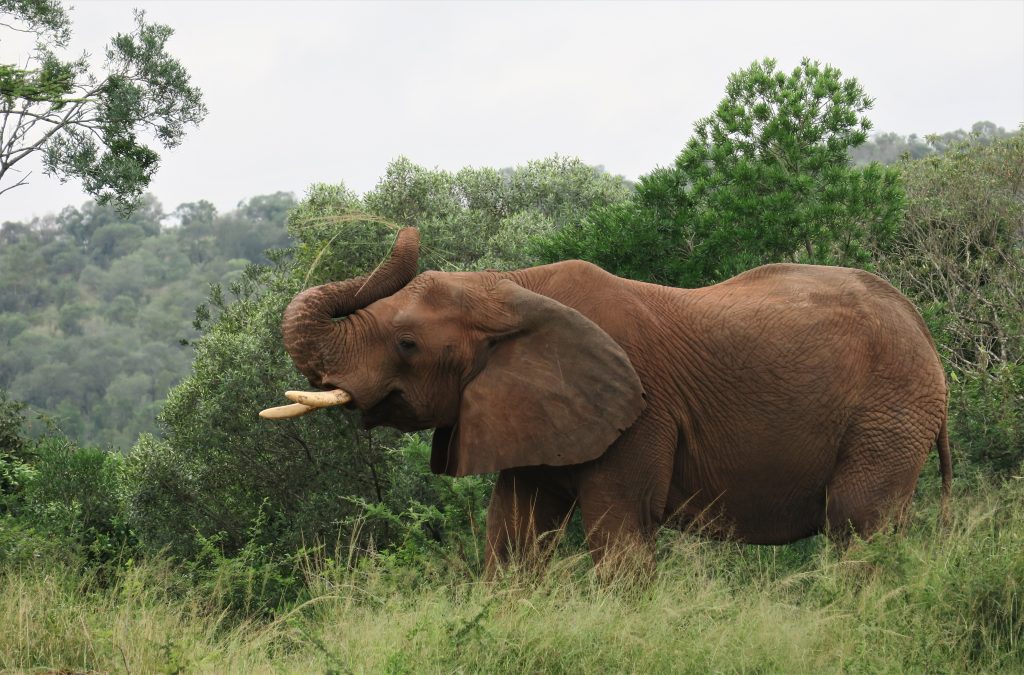 ‘For me it’s a very fascinating world, and frogs are very different to any other creatures… they don’t go by the same rules and are much safer to handle that most reptiles. It’s a hands on, fun activity that takes guests out of the game viewing vehicles and into the bush.’
‘For me it’s a very fascinating world, and frogs are very different to any other creatures… they don’t go by the same rules and are much safer to handle that most reptiles. It’s a hands on, fun activity that takes guests out of the game viewing vehicles and into the bush.’
With a wry smile, he adds ‘but still I think most people are inclined to pick a topic like birds or trees before frogging, which isn’t for everybody.’ Perhaps they should visit Amakhosi Safari Lodge and spend a few hours with Alwyn, I think to myself, I’m sure they would soon become avid frogging enthusiasts.

